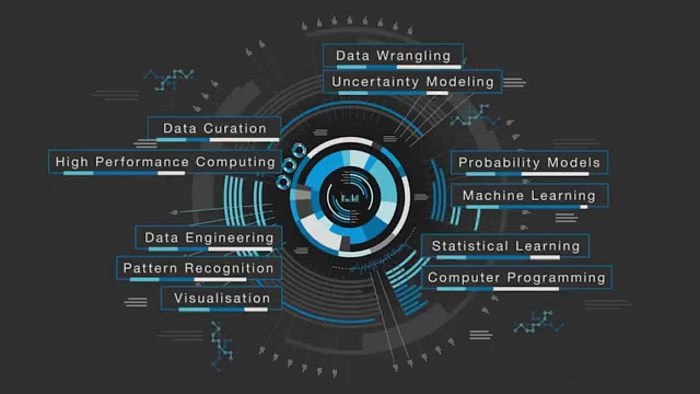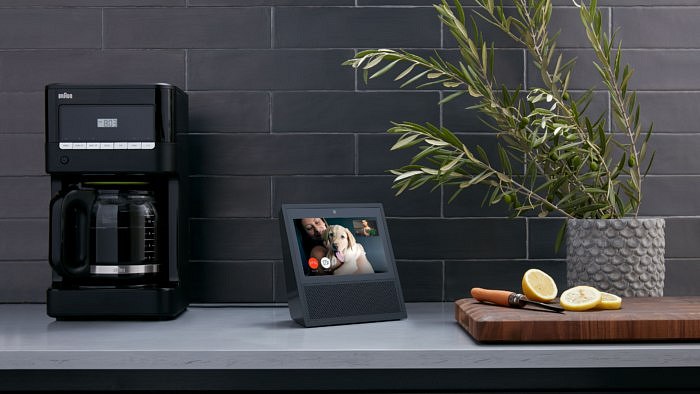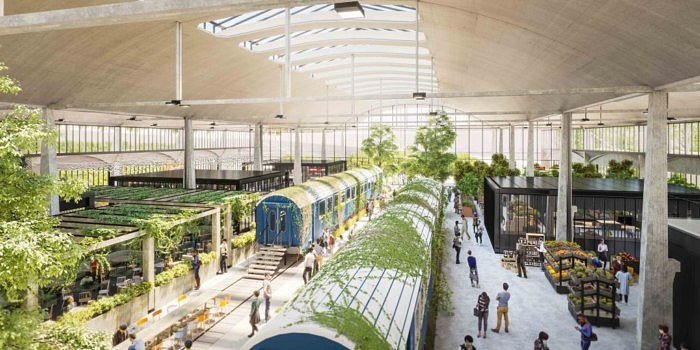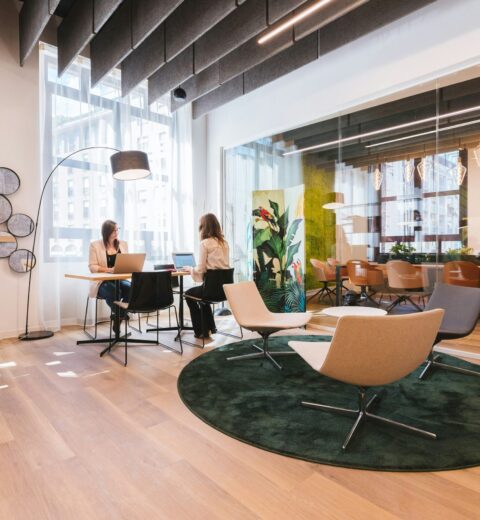How the Internet of Things (IoT) will change office design
If you’ve heard of the Internet of Things – commonly abbreviated to IoT – it’s probably through home devices like the Nest or Philips Hue. These internet-enabled gadgets can turn your house into a ‘smart home’, allowing you to automate processes as complicated as restocking the fridge, or as simple as turning the lights off and on.

Away from the home, though, the IoT is finding applications in almost every setting. One of the most intriguing is in office buildings and other facilities, where small sensors and other devices are being used to collect all kinds of data. Analysing all this information can provide unique insights into how offices are planned and designed – leading to radical improvements for businesses and their employees.
Business and the IoT
At home, the IoT might enable you to put the kettle on to boil without leaving the sofa or to check if you’ve got enough eggs and milk left in the fridge. The principles may be the same in an office or other facilities, but the applications are dramatically different. The IoT can allow for not just aspects of convenience or comfort, but radical shifts in the way we interact with rooms and devices, leading to notable improvements in productivity.

Take the fabled task of booking a meeting room, for instance. A limited number of spaces can easily lead to double-booking, and wasted time looking for a free space, or waiting for the current one to empty out. The IoT can eliminate this issue altogether. By combining sensors with a booking system, the IoT can allow you to book through an app or online portal, check when a room is free, and even configure the room’s temperature or book refreshments for your meeting.
From the perspective of office design, the IoT provides valuable data on how meeting rooms are used, and it’s these insights that can form the foundation for future office layouts. Meeting rooms may be moved, merged, or eliminated entirely, providing a more efficient use of any available office space.
While the simple collection of data offers up intriguing usage scenarios, more interesting is what the analysis of this data can reveal. Sensors showing the footfall of a bathroom, for instance, can be used to optimise its cleaning rotas. But if one bathroom is receiving far more footfall than others in the same facility, it may reveal an issue that could be remedied. Another bathroom (or its relocation) might be a simple change that would be sincerely appreciated by staff.
Data science
This is where the applications of the IoT to office design become more obvious. The collection of data on a constant basis from multiple sensors leads to a huge amount of information, what is commonly referred to as ‘big data’. Evolutions in algorithms and software which can sift through this data – and most importantly, highlight patterns – have led many facilities to complement traditional management roles with data scientists and analysts, or to look for a facility manager with this broader skill set.
Any piece of equipment can potentially be retrofitted with sensors, and any feasible data point can be collected from rooms and spaces. You might, for instance, find that several individuals have been taken ill from the same areas of a facility. This data could correlate with a seemingly disconnected but anomalous data points, such as an HVAC unit which is past due for repair, or a lower than average temperature. Fixing this might lead to fewer illnesses, thereby saving on labour costs.
The usage data collected from these sensors can be invaluable in planning and optimising spaces. By cross-referencing productivity data with location data, you may find that individuals in an open plan area are more productive than those in single offices or cubicles, or vice-versa. Light and air quality can also be monitored by sensors, with the presence of natural light or the strength of light and colours in a space all factoring into the happiness and productivity of employees.
This is not to underestimate the value of surveys and employee feedback, which will also help to establish these complaints. But sensors can help to reiterate traditional feedback, as well as identifying issues that might otherwise be hard to pin down. Optimisations like providing the right wattage of light bulb or a temperature that’s comfortable for everyone may seem small, but the effects can be substantial, and the data to support this will be plentiful.
Virtual cubicles
Introducing quantifiable data can help us to improve the function and layout of offices in line with statistics. Equally interesting however are the qualitative changes that the IoT and similar technologies open up. The centralised networks and systems which host the IoT can also be turned to support workers in other ways, many of them with a more ‘space-age’ feel.

A cloud-based account system, for instance, can better support the rise of hotdesking, where employees do not have a fixed workspace. Such a system could support working at home or at the workplace with ease, immediately making your files and preferences available. IoT enabled picture frames might show your photos of choice when you log into the nearby workstation, with environmental features like lighting and heating adjusting to your saved preferences.
This shift from a static desk and PC to a personalised, ‘work anywhere’ approach offers utility, flexibility, and comfort, as well as an aspect of control for employees over their working life. At a time where millennials are starting to dominate the workforce – and are primarily seeking assurances over their quality of life – systems like these can be a distinguishing factor, helping to reduce recidivism and attract talent.
Other applications of the IoT may seem more fanciful and are currently reserved for only the newest and most extravagant builds. IoT-enabled windows, for instance, can tint themselves according to the position and intensity of the sun. Elsewhere, some companies have taken to distributing ‘wearables’ like smart watches to monitor their employees’ vitals, and are even offering rewards to those who can prove they undertake regular exercise. We could even see armies of IoT cleaning robots, emerging from the walls at will to mop up spills and debris.

Like any new technology, it remains to be seen whether the IoT really heralds a revolution in office design or workplace productivity. As technology controls more aspects of our daily lives, however, it is only natural that it should impose on our working lives too. The hope is that businesses apply these new wealth of data to make their employees happier at work, rather than to impose more targets.
Photo credits: Google, Amazon, Station F
About the author: Invicta Mezzanine Floors are specialists in designing and installing state-of-the-art office mezzanine floors, turning the empty air of an office, into a productive, functional and attractive work area.



